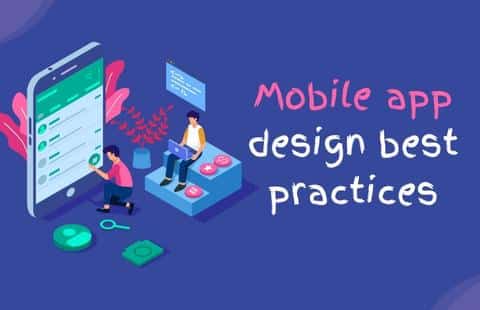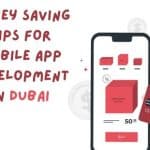- December 22, 2022
- techAdmin
- 0
Mobile App Design Development-The Ultimate Guide for Beginners
The task of designing mobile applications is called mobile app design development. Even though mobile apps using for many different things, the need for the best usability, accessibility, engagement, and overall user experience—in other words, addressing all of the issues mentioned earlier—unites them all.
We should remember that mobile app design development differs slightly from mobile web design when designing to ensure that we approach it appropriately.
Mobile hardware: Let’s start with mobile hardware. Each mobile apps have access to a broader range of hardware features, such as fingerprint security sensors, that aren’t widely supported on the web. In contrast, modern websites can now access device features like the camera.
Operating systems: Additionally, the operating system’s ingrained features can utilize by mobile apps. A good illustration of this might be the app stores for the platform, such as Apple’s App Store and Google’s Play Store, which provide a variety of monetization options right out of the box, such as subscriptions and in-app purchases.
Transitions: Websites don’t support animations, as well as mobile apps do; in point of fact, developers can quickly implement some screen transitions. We can use changes when prototyping with screen design tools because of this.
SVG support: SVG is one feature that cannot use in mobile app design development. Performance is of the utmost importance when it comes to a mobile application. PNG files are loaded on the loading screen and embedded into the app, whereas vector file formats require calculation.
We must export image assets in various resolutions to accommodate the different HDPI and retina devices on the market because PNG files are not resolution-independent vector formats like SVG files. Fortunately, screen configuration apparatuses permit creators to hand off resources for all goals.
Responsive design: Even though mobile app design development, especially Android apps, still needs to be compatible with a wide range of devices and screen sizes, they have a manageable burden of websites. Most versatile applications are planned to utilize natural responsive resizing highlights.
IOS vs. Android mobile app design
To determine the most effective approach to user interface design, Apple and Android each have their guidelines and recommendations. This is known as Apple’s Human Interface Design Guidelines, and Material Design is used in Android. Reading these documents is well worth it because each has its peculiarities.
Mobile app design best practices

1. Leveraging device software and hardware
As previously stated, mobile apps can use almost any operating system feature, including fingerprint scanners, credit card scanners, camera sensors, app stores, and device storage.
When iOS and Android provide native UI elements and functions that users are already familiar with and enjoy, it is unnecessary to reinvent the wheel.
2. Create meaningful screen transitions
A slide gives the impression that the previous screen is still underneath, giving the impression that the user might want to return to it (like reading the entire tweet on a new screen and then returning to the feed). The previous screen is pushed out of the way with a push, implying that it is safe for users who don’t want to return to it.
Because no two transitions are alike, you should carefully consider the ones you select.
2. Create beautiful app icons
Because the icon makes their home screen look bad, 21 percent of users delete apps. Even though this only applies to millennials, it’s essential to consider it.
3. Design anticipatory loading screens
Screen loading is crucial. The rest of the app experience runs more smoothly when everything has already been loaded, excluding database calls. Long load times can be a big turnoff, so use exciting imagery to build anticipation.
4.Use notifications sparingly.
As was mentioned earlier, notifications cause 71% of users to uninstall apps. This is very common among people 55 and older, but millennial users frequently complain about too many notifications (despite saying they wanted them in the first place). Portable clients are exceptionally flighty, so remember to utilize A/B testing and examination in your work process.
Create a better overall user experience
While non-design-related issues can lead users to uninstall apps, a poor overall user experience is a significant factor in app retention rates in the rapidly expanding mobile app market. With features like responsive resizing (for responsive design), exporting (for catering assets to all device resolutions), and screen transitions, zabtechdigital.ae helps to alleviate concerns. Getting expert mobile app developers is a competitive in Dubai. ZabTech IT Solutions is here for you to help you. For more details. Please contact us!
To know more about Mobile App development courses in Dubai. Click here!

